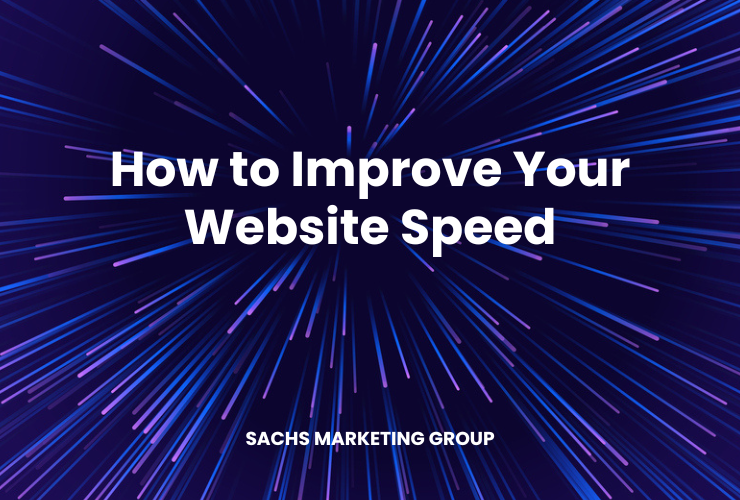You can improve website speed by optimizing images, reducing the number of HTTP requests, leveraging browser caching, and minifying CSS and JavaScript files. By focusing on these and other performance-related factors, you can significantly enhance user experience, improve search engine rankings, and ultimately, increase conversions. Consulting with a web developer or a specialized agency can provide tailored solutions for your specific needs.

A slow website can have a detrimental effect on your website’s visibility and ability to attract traffic and customers from search engines.
Fortunately, there are a few things you can do to improve the speed of your website. Making sure your website is fast will help improve your search engine optimization and ability to boost traffic.
In this article, you will discover how to improve website speed so it effectively ranks in search engines and attracts visitors.
Overview
How to Improve Website Speed
There are a number of things you can do to improve website speed. If you’re like most business owners, you’re probably too busy to learn how to accomplish these tasks, which can be technical in nature and require web developers.
However, understanding the basics will help shine a light on what needs to be done in order to improve your website.
Here’s how to improve website speed.
Optimize Images
One of the most common culprits for slow-loading websites is large image files. These consume a lot of bandwidth, leading to increased loading times, especially for mobile users or those with slower internet connections.
There are various ways to optimize images without sacrificing quality – tools like Adobe Photoshop, GIMP, or specialized compression services like TinyPNG can dramatically reduce file sizes. Some content management systems (CMS) like WordPress also offer plugins that automatically optimize images as you upload them.
Another essential aspect of image optimization is choosing the right format. For instance, JPEGs are generally better for photographs, while PNGs are more suited for images with transparent backgrounds. WebP is a newer format that offers high-quality images at significantly smaller file sizes. Properly optimized images can lead to quicker load times, improved SEO, and a better user experience, thereby improving your website’s overall performance and effectiveness.
Limit the Number of HTTP Requests
Every element on your website, from images and scripts to stylesheets, generates an HTTP request when someone visits a page. More requests mean longer load times, making it crucial to limit the number of HTTP requests your website makes. You can minimize HTTP requests by streamlining the elements on your page. This can include using CSS instead of images where possible, reducing the number of elements on a page, and using CSS sprites to create a template for frequently used images.
Additionally, you can leverage browser tools like Google Chrome’s DevTools to identify how many HTTP requests your site currently makes, providing a benchmark to improve upon. Modern development practices like lazy loading can also help, as they ensure that only the essential elements load when a user visits your site, reducing the initial number of HTTP requests. By being mindful of the elements that contribute to HTTP requests and actively working to minimize them, you can significantly improve your site’s speed and user experience.
Use Browser HTTP Caching
Browser HTTP caching is a technique that can significantly speed up your website by storing frequently accessed files locally on a user’s device. This means that when a user revisits your site, their browser can load these files from their local cache rather than downloading them again from the server, which saves both time and bandwidth.
To implement browser caching, you’ll need to configure your web server to send specific HTTP headers, telling the browser which files to cache and for how long. The most commonly used headers for this purpose are Cache-Control, Expires, and ETag. Optimally configuring these headers can result in a faster loading website, reduced server load, and a more responsive user experience. It’s a win-win for both website owners and users.
Remove Unnecessary Render-Blocking JavaScript
JavaScript files can be “render-blocking,” meaning they prevent the webpage from displaying until they’re fully downloaded and executed. This can create a frustrating delay for users who just want to start interacting with your site.
To improve speed, it’s crucial to remove or defer unnecessary JavaScript files that block the rendering of your webpage. This can be done in multiple ways:
- Asynchronous Loading: Use the async attribute to allow the script to be downloaded in the background, without blocking the rendering of the page.
- Defer Attribute: The defer attribute allows the script to be executed after the HTML is parsed, reducing initial load times.
Inline Critical JS: For very small and crucial scripts, you can inline them directly into your HTML, so they’re immediately available for rendering. - Code Splitting: Break down large JavaScript files into smaller chunks, loading only what’s necessary for the initial page view.
By focusing on removing or deferring render-blocking JavaScript, you not only improve load times but also provide a smoother, more enjoyable user experience.
Limit the Use of External Scripts
External scripts, such as social media sharing buttons, advertising networks, or analytics services, can significantly slow down your website. These scripts often require additional HTTP requests to external servers, each adding to your site’s load time. Not to mention, you’re at the mercy of another server’s performance, which you can’t control.
To tackle this issue, it’s best to be selective about the external scripts you incorporate:
- Prioritize: Only use external scripts that are essential to your website’s functionality or business goals.
- Async or Defer: Whenever possible, use the async or defer attributes to avoid render-blocking.
- Local Hosting: Some external scripts can be downloaded and hosted locally, though this is not always permitted by the service provider.
- Lazy Loading: For non-critical external features like chat support, consider lazy loading the script so it doesn’t impact initial page load time.
- By being judicious in your use of external scripts, you can speed up your site while still incorporating necessary third-party functionality.
Limit Redirect Usage
Website redirects, like 301 (permanent) and 302 (temporary) redirects, are often necessary for a variety of reasons, such as when you’ve changed the URL structure of your site. However, each redirect creates additional HTTP requests, causing delays in page loading.
Here’s how to minimize the impact of redirects:
- Eliminate Unnecessary Redirects: Only use them when absolutely necessary, such as when removing or moving a page.
- Limit Redirect Chains: Avoid creating chains of multiple redirects leading from one URL to another, as each step in the chain incurs additional load time.
- Prefer Server-Side Redirects: These are generally faster than client-side redirects, which rely on JavaScript and can block rendering.
- Utilize HTML5’s rel=preload Attribute: For known, necessary redirects, you can inform the browser in advance using rel=preload to make the process more efficient.
- By limiting and optimizing your use of redirects, you’ll reduce HTTP requests and create a faster, more efficient website for your users.
Minify CSS and JavaScript Files
Minification is the process of removing unnecessary characters and whitespace from your CSS and JavaScript files without changing their functionality. This reduces the size of the files, allowing them to be downloaded more quickly, thus improving website speed.
Here are some best practices:
- Use Build Tools: Utilize tools like Gulp, Grunt, or Webpack that have minification plugins.
- Server-Side Features: Some web servers offer automatic minification. Check to see if this is an option.
- CDNs: Content Delivery Networks sometimes offer this as a part of their package.
- Manual Minification: For smaller projects, manual online tools exist where you can paste your code to get a minified version.
- Check Compatibility: Always test your website after minification to make sure all features still work as intended.
- By minifying your CSS and JavaScript files, you can improve load times and make your website more efficient without sacrificing functionality.
Hire a Web Developer
If you find yourself overwhelmed by the technical aspects of website speed optimization, or simply want to save time and ensure the job is done right, hiring a skilled web developer can be a game-changing decision. An experienced developer can handle everything from image optimization to advanced code modifications, allowing you to focus on other aspects of your business.
Employing a developer can bring in specialized knowledge on the best practices for improving website speed. Whether it’s leveraging the latest technologies, optimizing server performance, or ensuring optimal code structure, a developer can add a level of expertise that can dramatically improve your site’s performance.
By outsourcing this work to a qualified professional, you can ensure that your website is not just fast but also reliable and well-optimized for the long term. This means better user experience, higher SEO rankings, and ultimately, more conversions and revenue for your business.
Need Help Improving Your Website Speed & Performance?
Are you frustrated with your website’s slow loading times, knowing that each extra second of delay can cost you valuable conversions and customer satisfaction? Sachs Marketing Group can help!
Imagine a streamlined website that loads almost instantaneously, impressing your visitors and improving your search engine rankings. Our team of talented web developers specializes in website speed optimization and can make that dream a reality for you.
Contact Sachs Marketing Group today to skyrocket your site’s performance.
Conclusion
Improving your website speed is not just a one-time task – it’s an ongoing process. Regularly monitor your website’s performance and make the necessary adjustments to ensure you’re providing the fastest, most efficient user experience possible.


